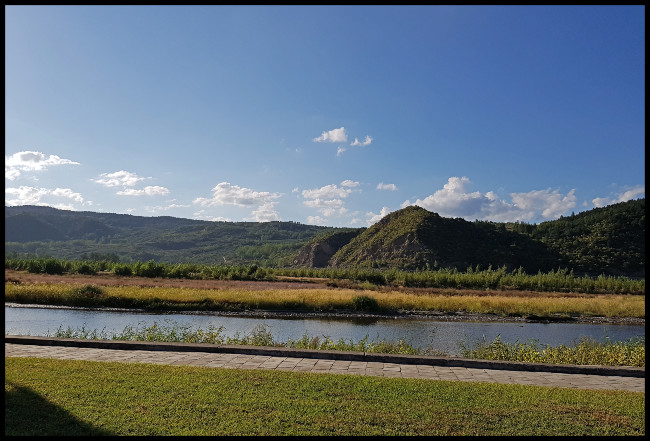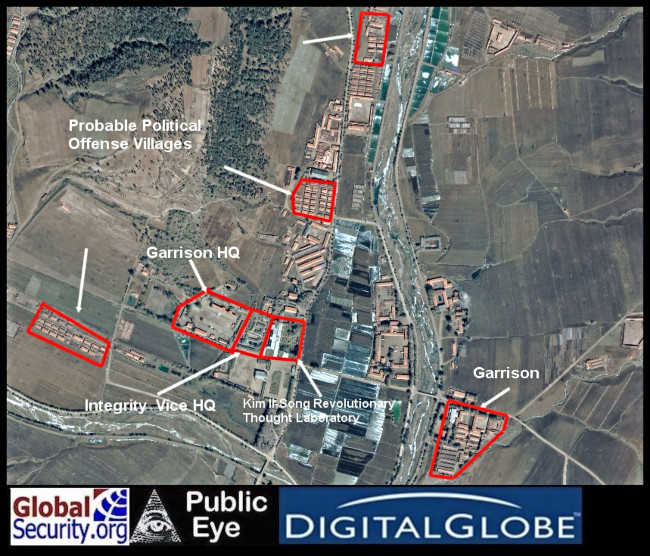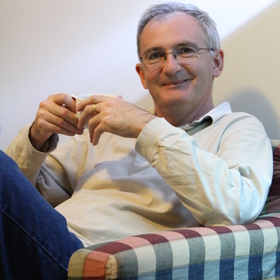Hoeryong is a city of around 100,000 people in the northern part of North Hamgyŏng Province, right on the border with China. Like all other towns and cities in North Korea you would imagine that the population was somewhat smaller as people tend to stay at home when not out working. North Korea is not a café / window shopping society though things are slowly changing in this direction, especially in Pyongyang where a multitude of new cafes and restaurants had sprung up between my 2014 and my 2018 visit.
Hoeryong was totally rebuilt after the Korean War as it and other cities such as Sinuiju along the border with China were specifically targeted by US aerial bombardment when General McArthur, head of the United Nations forces, ordered that a wasteland be created between the front and the Chinese border. In mid November 1950 Hoeryong was hit with napalm “to burn out the place”. This was the beginning of an air offensive that levelled North Korea and saw millions dead before the nominal end of the war in 1953.
Very few western tourists visit Hoeryong – maybe a hundred or so per year – and while there has been a big push in recent years to spruce the place up and attract tourists from across the border in China, to relieve them of their hard currency, the Chinese have shown little interest in visiting and I certainly saw none during my short stay. It is said that in 2007 the then Premier Kim Yong-il brought with him on a visit the Hoeryong a train carriage full of glass and three of cement ordering that the material be used to beautify the city to a level befitting its importance as the birthplace of Mother Kim Jong-suk, wife of Kim Il-sung and mother to Kim Jong-il.
Given the city’s border location and its alleged association with a particularly brutal concentration camp, which I will come back to briefly, rules around photography were strictly enforced here and there was no way we were going to get to go for a walk down the street, even with our guides.


That said, at no time did I feel the slightest unsafe or insecure here – I just felt more restricted in an already restrictive country and had a stronger sense that things were being hidden from me. Of course, things are hidden from tourists all the time in North Korea (generally on the premise that you don’t need to know, you would not be interested in that, etc, etc) but here in Hoeryang I somehow felt it more, in addition to noticing that the softening up of, and the willingness to engage in eye-to-eye contact by, people in the street (something that by 2018 was prevalent in Pyongyang and growing in other areas) just didn’t seem to exist here at all. I have no doubt that given time and increased exposure to foreigners that will change.
While the city today, apart from a few newly erected buildings such as the Hoeryong Schoolchildren’s Palace and its gleaming monuments to the Leadership – here Kim Jong-sok, looks rather poor and lacking in facilities it belies the fact that it is one of the more prosperous cities in the country, outside Pyongyang. Our guides advised that this was due to mining operations in the area.

External commentators argue that the primary reason for the city’s success has been, and remains, it proximity to China and the trade, legal and otherwise, particularly otherwise that that engenders. This relationship with China, it is argued, especially benefited Hoeryong in the mid 1990s when the North Korean economy was failing big time due to the collapse of the Soviet Union and the country was engulfed in famine. Hoeryong was largely unscathed by either the downturn or the famine.
Also not covered by our guides, and areas I will only briefly refer in my blog – which as I have indicated in introductory entries is based solely on what I saw and heard in the country – are the matters of defection and the existence or otherwise of a concentration camp on the outskirts of the city.
From the guides’ perspectives none other than a few traitors defect from North Korea. “Why would anyone want to defect given the loving tender care and protection of Kim Il-sung and his successors?” Further they contend that there are no concentration camps, re-education camps, gulags, torture centres, or labour camps of the variety alleged to be there by foreign enemy countries and the traitorous defectors. The guides readily admit to the existence of regular prisons and rehabilitation centres of the type found anywhere else in the world and are keen to point out that the prison incarceration rate in North Korea is significantly lower than that in the United States.
While the US has the highest incarceration rates per 100,000 (655) of the 233 countries reported on by World Prison Brief, North Korea is not reported on by the Brief due to the difficulty of obtaining accurate/verifiable data. The U.S. State Department human rights report for 2016 says that estimates of North Korea’s prison population total range between 80,000 and 120,000. If accurate, this would place its incarceration rate (473 assuming 120,000 prisoners) significantly lower than that of the US though still high.
Some guides are amenable to talking with visitors about defectors and prisons, some are not – do not push it. On both my visits I only felt comfortable raising these subjects, together with poverty, with the senior local guides. They said little more than I have indicated above on defectors and prisons but were more open to discussing poverty.
I will come back to the matter of trade with China and border crossings (including defections) in a separate review on my visit to the border itself.

In terms of prison camps, if you Google Hoeryong, a significant number of the search results will relate to a concentration camp referred to as No 22 Prison Labour Camp. In summary this camp is alleged to have operated in the mountains about seven kilometres from downtown Hoeryong between 1965 and 2012 when it was closed and its inmates transferred to other camps. External commentators suggest that it was closed due to a fear that its operations were becoming too exposed outside North Korea for comfort – via a couple of high level defectors who claim to have worked in the camp. At its peak in the 1990s it is said to have housed around 50,000 inmates, in the main people who where deemed politically unreliable or who had been openly critical of the government. Not just those directly in need of punishment were incarcerated here but due the principle of guilt by association (yeonjwaje) the prisoner’s whole family – three generations – was also regularly incarcerated, in addition to any children born in the camp. All prisoners here were detained until death (or transfer to another camp where they died); there were no releases from this camp. Given the latter, the majority of evidence of the camp’s existence and the bloodcurdling stories of brutality related to this camp come from satellite images combined with the recollections of the two officials (discredited by North Korea) referred to above. North Korea officially denies that there was ever a prison camp here and claim that the satellite images are of an ordinary regular township. Again some external observers argue that this would not account for the disappearance of what looked like guard posts and other military installations from satellite photos after 2012.


Leaving aside, hard though that is, the issue of prison camps, our overnight visit to Hoeryong saw us visiting a number of sites related to Kim Jong-suk (including one at the Tumen River, the country’s border with China), a secondary school and the relatively recently opened ‘Schoolchildren’s Palace’ where gifted children engage in all manner of extra-curriculum activities.
In contrast to the last two prison camp images I will leave you with a photo of children at the Schoolchildren’s Palace playing their oversized accordions, albeit looking a bit grumpy about having to hang around for our late arrival.

For my next North Korea (2018) – Hoeryong review click HERE


Very interesting though somewhat grim I should imagine.
LikeLiked by 1 person
A belated thank you for reading my entry… border towns in many countries that the grim and bleak look .. NK is no exception!
LikeLiked by 1 person
You’re very welcome – no need to apologise I don’t always find the time to catch up on blog work! It’s school holidays here and have been busy helping with my 2 granddaughters so just catching up now!
LikeLiked by 1 person
Very interesting, especially your comments on what local guides will and will not discuss. I just double-checked our itinerary to find that Hoeryong isn’t on it, although other out of the way places are 🙂
LikeLiked by 1 person
You will indeed have enough to do .. I can gaurantee you that you will hanker for a few hours alone at various times.
LikeLiked by 1 person
Excellent post. Really enjoyed your balanced thoughts on such a mysterious place.
LikeLike
Thank you. It is hard to stay balanced and where there are differing opinions (as there are on many things) I most time report only the NK version as other versions are better known and more readily available for those interested.
LikeLiked by 1 person
Thats a great idea. The Western point of view is readily known and easy to find, so it is really interesting to hear what is told to the citizens , as that is not as well known.
LikeLiked by 1 person
I never knew about this place. Very intriguing.
LikeLiked by 1 person
North Korea is full of intrigue – from the minute you step of the plane or train till you leave!
LikeLiked by 1 person
Great and informative, thanks.
LikeLiked by 1 person
Thank you for visiting. I am happy you found it informative.
LikeLiked by 1 person
My pleasure.
LikeLiked by 1 person
Intriguing stuff – something completely new to me.
LikeLiked by 1 person
Glad you found it so… NK is certainly an interesting place.
LikeLike
It certainly looks desolate.
LikeLiked by 1 person
Fascinating report 👍 and your comparison between the USA and North-Corea in regard of dungeons and prisons really interesting. I would like to add that the 20 most dangerous cities only in the Americas (3 in the USA) but with the exception of Pretoria in South-Africa.
LikeLiked by 1 person